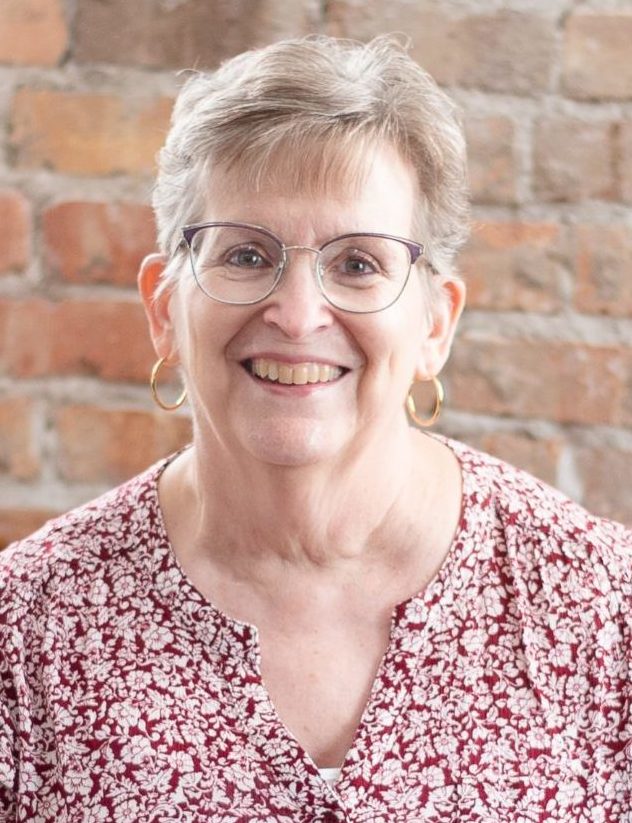Post Oak MB Church, Indiahoma, Okla., celebrated its 118th anniversary with a special worship service and lunch Nov. 11, 2018. Guest speaker Peggy Goertzen reviewed the congregation’s history and church leader Wass Ulloa moderated the service, including a prayer time. Following the service, a church dinner featuring an abundance of turkey and ham was served and Dave Gerbrandt, ofClinton, Okla., whose parents, D.J. and Linda Gerbrandt, were missionaries atPost Oak from 1945 to 1952, led a sharing time.
In her presentation, Goertzen told the story of Henry and Elizabeth Kohfeld from Kansas who were the first missionaries to the Comanche Indians living on the Kiowa-Comanche reservation in Oklahoma. The idea of Mennonite Brethren reaching out to the Comanches first surfaced in 1894 and was officially authorized a year later. An early delegation that explored the possibilities of ministry on the reservation learned that attempts by other denominations to establish a mission site had failed.
Compelled by his call from God, Kohfeld repeatedly tried to gain a hearing with Comanche chief Quannah Parker at his large residence known as Star House. The long-standing Comanche-white hostility was an obstacle, said Goertzen. But God worked through one of Parker’s wives who told her husband, “Here is a Jesus man sent from God to build a Jesus-house and teach us the way to heaven.”
Parker gave theMennonite Brethren 160 acres of rocky land and Kohfeld moved his family to the area in the spring of 1896 and volunteers from the Corn (Okla.) MB Church built the first chapel. There were two converts—one an elderly deathbed conversion and one a terminally ill young man—who accepted the “Jesus way” and were givenChristian burial, but they were not baptized.
Two deaconesses from Kansas, Maria Regier and Katharina Penner, joined the Kohfelds, whose diligent efforts, Goertzen said, were being met with indifference and suspicion. The women began serving church dinners after the Sunday worship services and hostedChristmas festivals that drew 100 to 200 people. As a result, more cordial relations were realized.
Meanwhile, the Mennonite press kept the vision and needs of the Post Oak mission in front of the hearts of the larger MB church family leading to much prayer support.
Then Harold Parker, Chief Parker’s son who Goertzen described as a bright young man who was his father’s pride and joy, became ill with tuberculosis. Kohfeld visited Harold, who wanted to know “the Jesus way.” Although Harold died, Goertzen said he was happy to have found God’s love. During his son’s illness, the chief found Kohfeld’s visits comforting and inspiring and no longer discouraged his people from coming to the Post Oak chapel.
Because the vision for the work was growing, in 1901, the MB Conference appointed Abraham J. andMagdalena Becker as the Kohfelds’ missionary assistants. Their arrival coincided with the beginning of the allotment program on the reservation andMagdalena was hired by the government as an assistant field matron, which gave her a natural way to connect with the area residents. Magdalena traveled more than 100 miles each month by buggy visiting every home, teaching baking sewing, housecleaning, washing and other helpful skills. According to her first report, she visited 223 families—619 people, half of which lived in houses and half intents.
When the Kohfelds concluded their ministry in 1907, they left a legacy: securing a site from ChiefParker, constructing first buildings, developing a home visitation program as “friends,”and establishing an excellent water supply as well as a cemetery, Sunday dinners and an annual Christmas program.
The Beckers continued regular tent meetings at the allotment camp, with no response. Magdalena became especially discouraged. Physically and emotionally exhausted, she walked to a grove of trees and let herself cry. An Indian woman, Wi-e-puh, went to her and tried to console her.
“Why are you weeping?”
Magdalena answered, “You Indian people are tramping God with your feet and do not want to be saved.”
There was no immediate response, but that evening Wi-e-puh went forward and committed herself to follow “the Jesus way.” Six others followed, including one man. July21, 1907, that man, Sam Mo-Watt (No Hand), was the first to be baptized. With the baptism of these first 7 converts, the Comanche MB church was born.
“The light of the gospel of Jesus had definitely shown and penetrated the darkness and brought healing of body, spirit and soul,” said Goertzen.
But, Goertzen said, none of this would have happened without the dedicated Indian workers, especially Herman Asenap who served as Becker’s translator for 24 years before he himself was converted. Asenap was baptized in 1932 and continued to give out“the gospel according to Herman” every Sunday until his death in 1960. One of Asenap’s children and two of his grandchildren were present at the anniversary celebration.
Becker also started an outreach ministry among Mexicans at Lawton, Okla., and in the late1960s and early 1970s a number of Lawton families joined the Post Oak congregation. Becker’s ministry at Post Oak spanned five decades.
Goertzen says the impact of the missionaries, particularly the women, is evident in the names of some of the Post Oak church family. Indian women were named Lizzie, after Elizabeth Kohfeld; Maggie, after Magdalena Becker; and Linda, after Linda Gerbrandt. Magdalena Becker was often given the privilege of naming an Indian baby.
Thanks to Peggy Goertzen for her presentation notes.


Connie Faber joined the magazine staff in 1994 and assumed the duties of editor in 2004. She has won awards from the Evangelical Press Association for her writing and editing. Faber is the co-author of Family Matters: Discovering the Mennonite Brethren. She and her husband, David, have two daughters, one son, one daughter-in-law, one son-in-law and two grandchildren. They are members of Ebenfeld MB Church in Hillsboro, Kansas.























